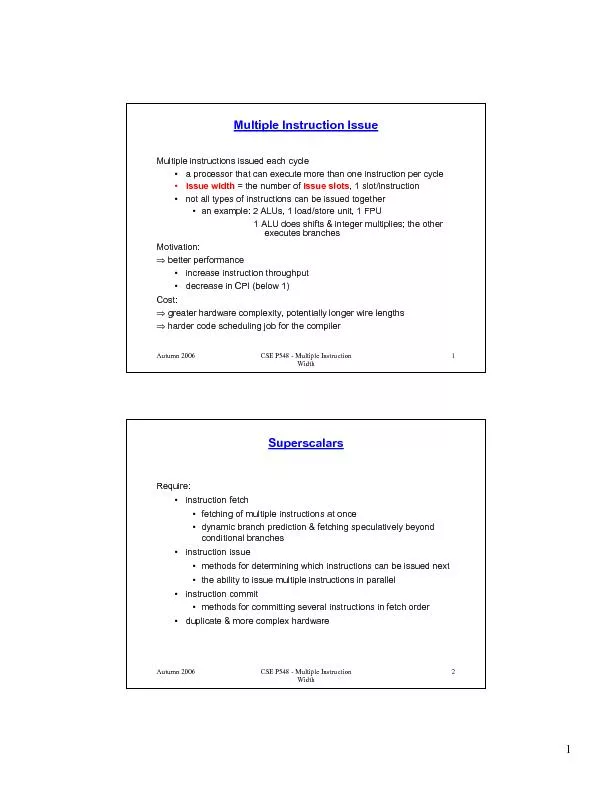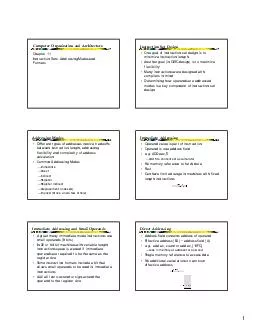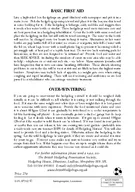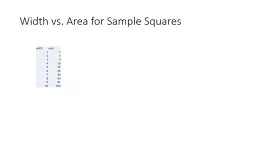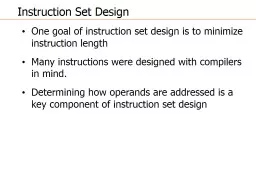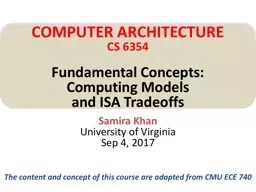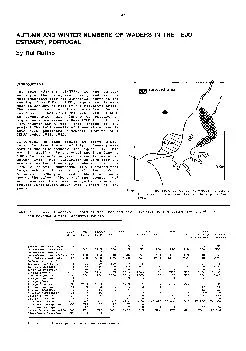PDF-Autumn 2006CSE P548 -Multiple Instruction Width
Author : giovanna-bartolotta | Published Date : 2016-03-25
1 Multiple Instruction Issue Multiple instructions issued each cycle149a processor that can execute more than one instruction per cycleissue width the number of
Presentation Embed Code
Download Presentation
Download Presentation The PPT/PDF document "Autumn 2006CSE P548 -Multiple Instructio..." is the property of its rightful owner. Permission is granted to download and print the materials on this website for personal, non-commercial use only, and to display it on your personal computer provided you do not modify the materials and that you retain all copyright notices contained in the materials. By downloading content from our website, you accept the terms of this agreement.
Autumn 2006CSE P548 -Multiple Instruction Width: Transcript
Download Rules Of Document
"Autumn 2006CSE P548 -Multiple Instruction Width"The content belongs to its owner. You may download and print it for personal use, without modification, and keep all copyright notices. By downloading, you agree to these terms.
Related Documents

